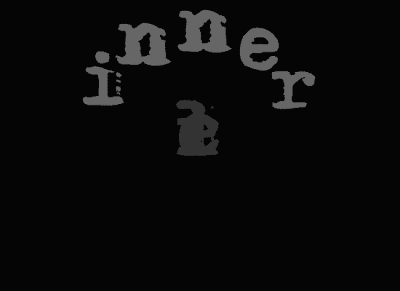
Me And My Big Mouth
Well I have to confess that I have been a bit ornery. I ran across a blog that was discussing the painting shown above. I thought I would try to stir things up a bit and drop in the comment that the math was wrong and that it should have been multiplication as opposed to addition. This created quite a stir among this group of rowdy folk at
the art police blog. You may want to follow it back to see their musings after I dropped the comment.
The text in green below is a response to my comment from the art policeman and my response to him is in white.
Kaz said:
"Well, I hate to be the mathart police however, the math is wrong ... it should be multiplication and not addition.
How can it be wrong when it was never right in the first place?
It is true that there is no 'correct' art however there is correct and incorrect mathematics. This is why you called up your mathematical art equation department ... you just didn't realize it was me. (I guess it was presumptuous of me to show up)
Well, the art at least that is....
But for the sake of even more pointless argument.
And you really have not argued a thing you have just brain-farted your opinion and have not backed it up with a damn thing. Have you?
You are correct that I didn't give you a direct hint Furthermore; I should not expect you to dig through my blog to find a hint so I owe you an apology and I will now supply the link
to help with our discussion if you are so inclined.
(Here it is)So let us at least show you Kaz Mashorseshockey how to argue.
Here we go-
Are we not dealing with three paintings here in this particular equation?
Only three, so therefore if the factors were to be multiplied as in repeated addition, as you suggest, then the two said factors would result in a product of a multiple of the two.
I see your last statement being basically correct. Although, repeated addition is not how I would describe this situation within this context.
Unless the two factors were exactly the same then they would result in the same product,
Well the last statement seems to indicate that you think that 4 x 4 = 4 and not 16 … I doubt that was your intention so we are not clear here.
or if one factor was zero, then the resulting product would be zero or in this case no painting at all(which is what they should be in a perfect world)...that zero being the no product.Again I see this last statement being correct.
However in this case we have two singular images resulting into another singular image and that clearly can only be stated in an equation of addition.
1painting + 1painting =2painting
or #1painting + #2painting =#3Painting
If it was a multiplication problem, as you Kaz Matdingdong have suggested , we would result in
1painting x 1painting =1painting
or #1painting x #2painting =#2painting
Here it seems that you are not making any sense for it seems that you are saying that the statement, "4 + 4 = 8" is a valid equation yet "4 x 4 = 16" is not valid or maybe you are trying to say that 2 x 4 = 4 which of course is not true mathematically furthermore, this is not the case in the artwork for the second image from the painting is not the same as the product image(Obama) -- I am not following your logic here.
Either way you look at it, and obviously you didn't, The multiplication scenario does not fit.Maybe you can look at this again after checking out this
blog post . Your comments would be appreciated.
We here at The Art Police feel you are horribly wrong in correcting us, so therefore you, along with our fine art friend from NC Karen on the other blog, have failed in trying to insult the intelligence of The Art Police.
You have misunderstood my correction for it was not to insult anyone I just thought that I would have some fun and stir things up at bit and try to get some discussion concerning the problem of addition and multiplication in math poetry. However I really didn't mean to give poor 'whirley gig man' a reoccurring nightmare from his high school days. And if he really knew me I think he would like me because I have more in common with him than he realizes.
Again my intent was certainly not to piss anyone off … Whirley gig man was right … I was just farting around … I just didn't realize it stunk so badly.
YOU Kaz Matahoowy FAILED!
And you will be added to our ART POLICE TIOI(Trying to Insult Our Intelligence) list of
Top That Killer!
We do appreciate your appreciation for Mathart and do encourage you keeping up with your craft.
I appreciate your appreciation and you will notice that I purposely have avoided talking about art in this blog post and especially the art aesthetic used in the painting.
Cheers Mr. Policeman



































 Karl Kempton
Karl Kempton




